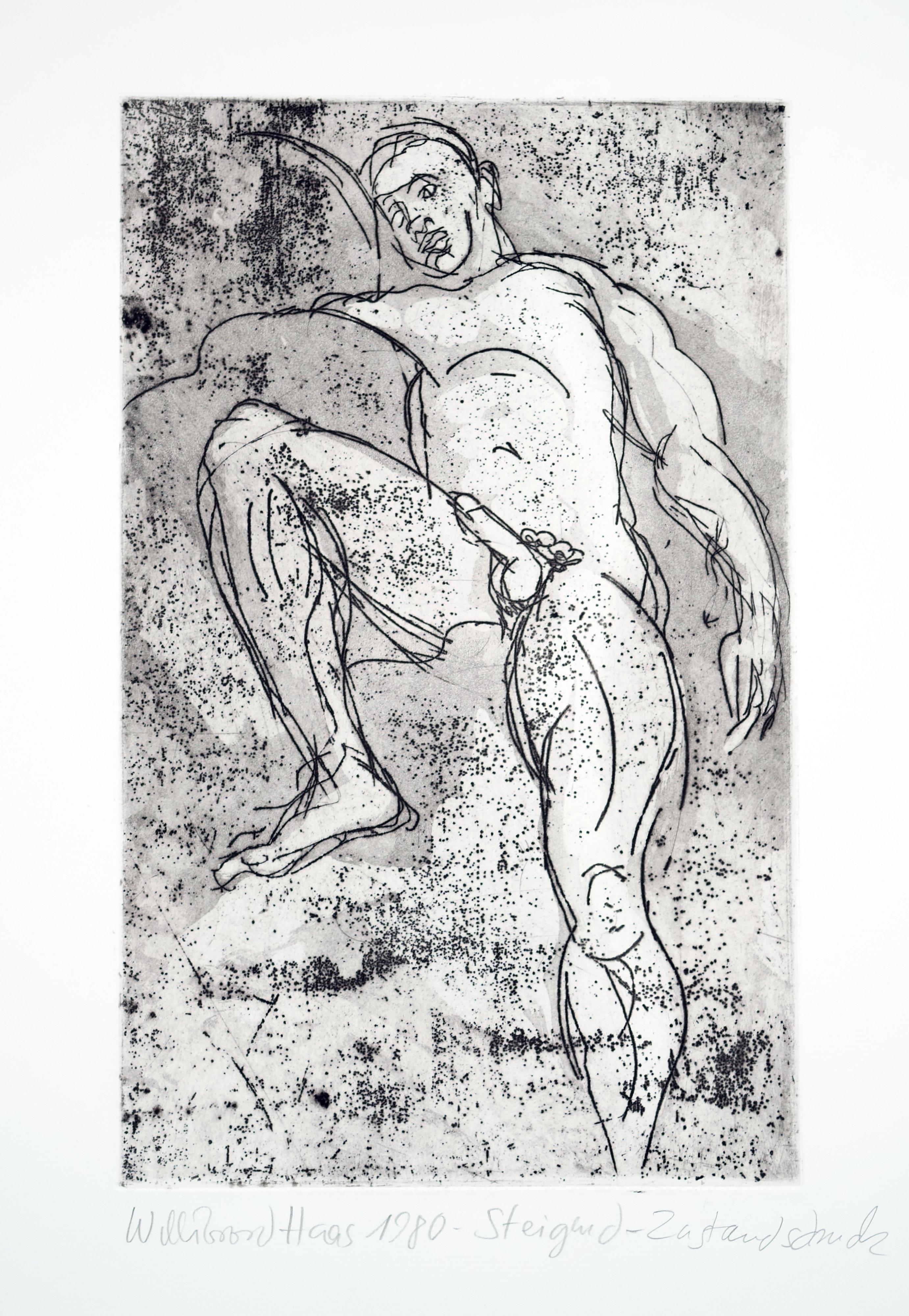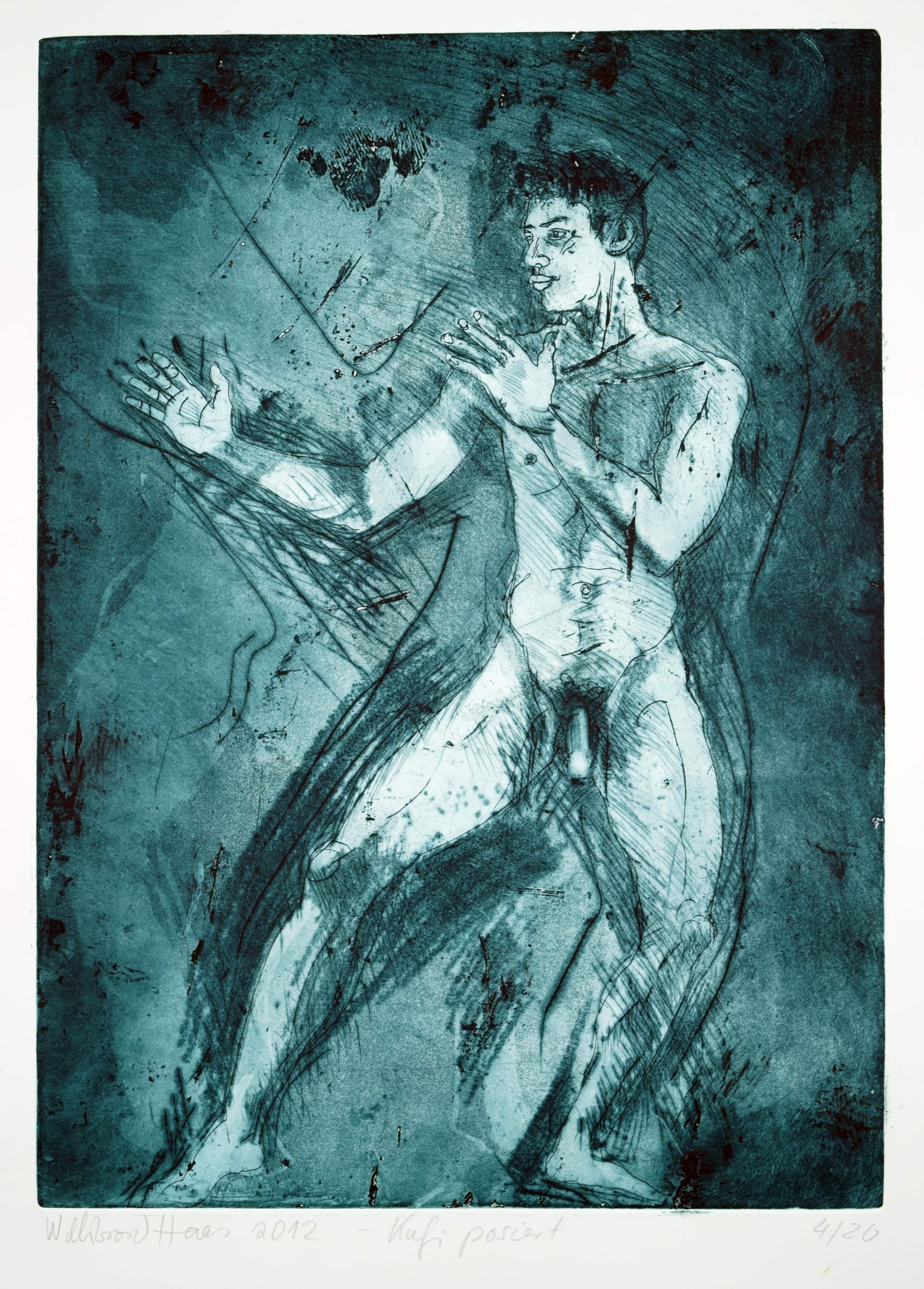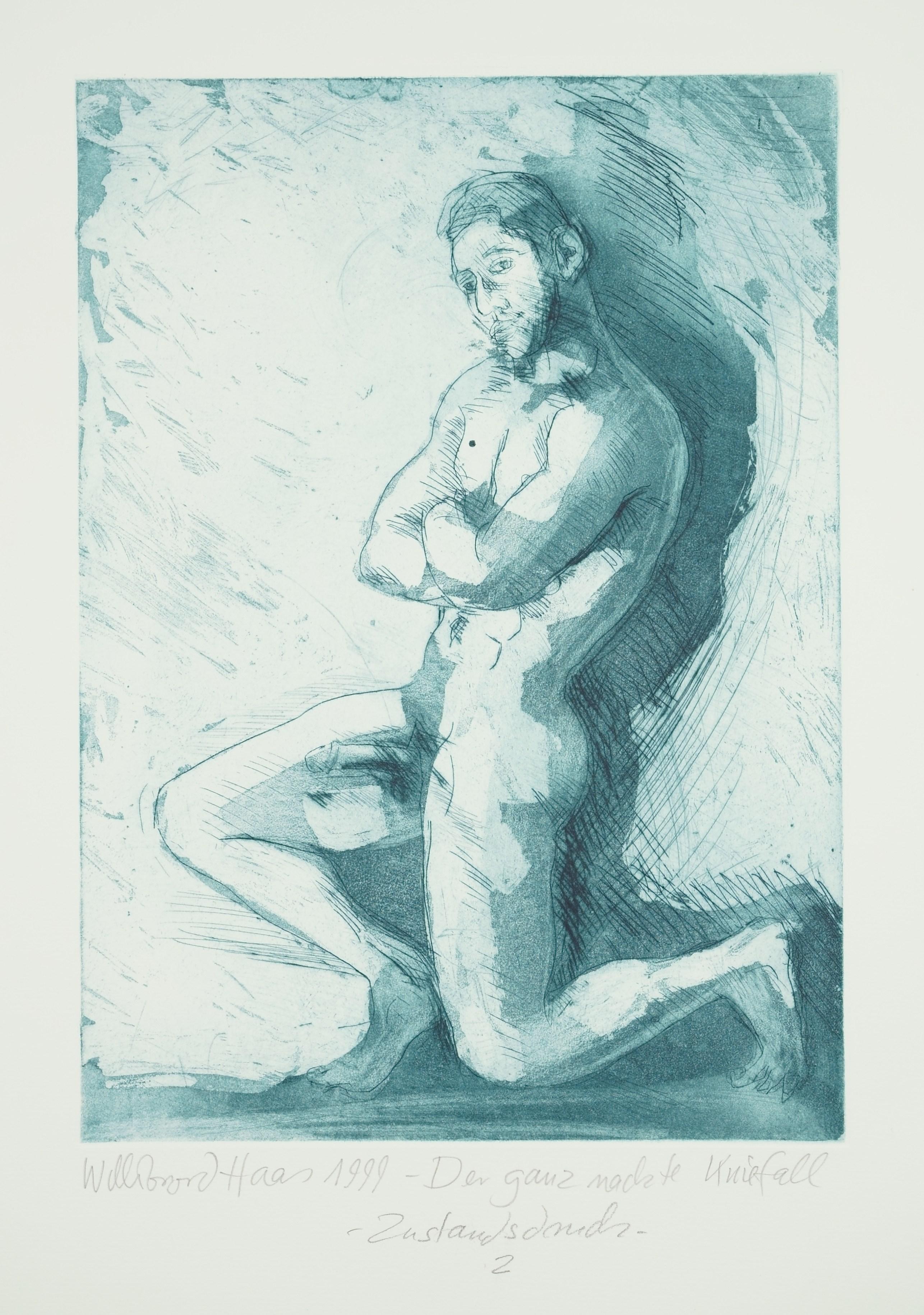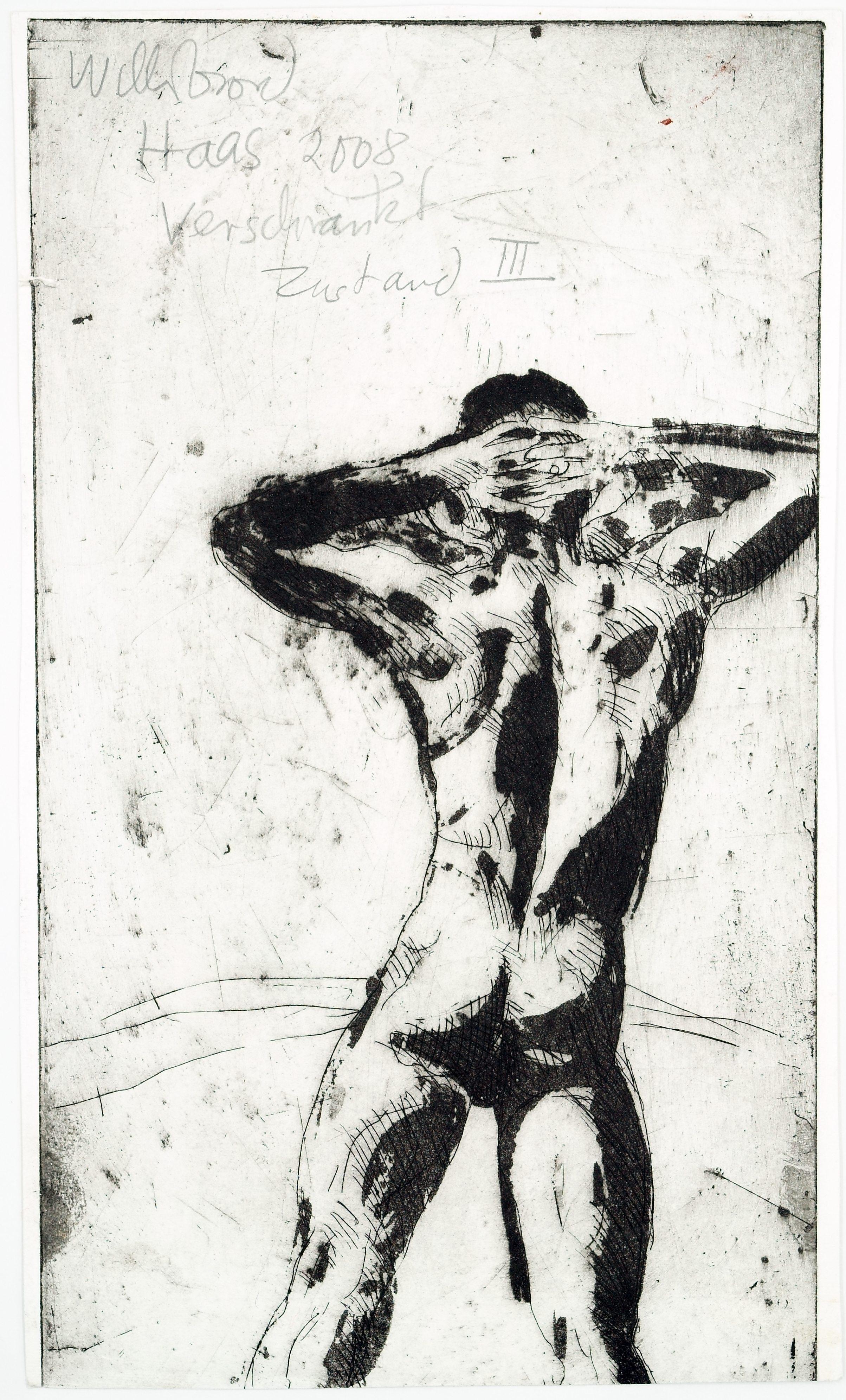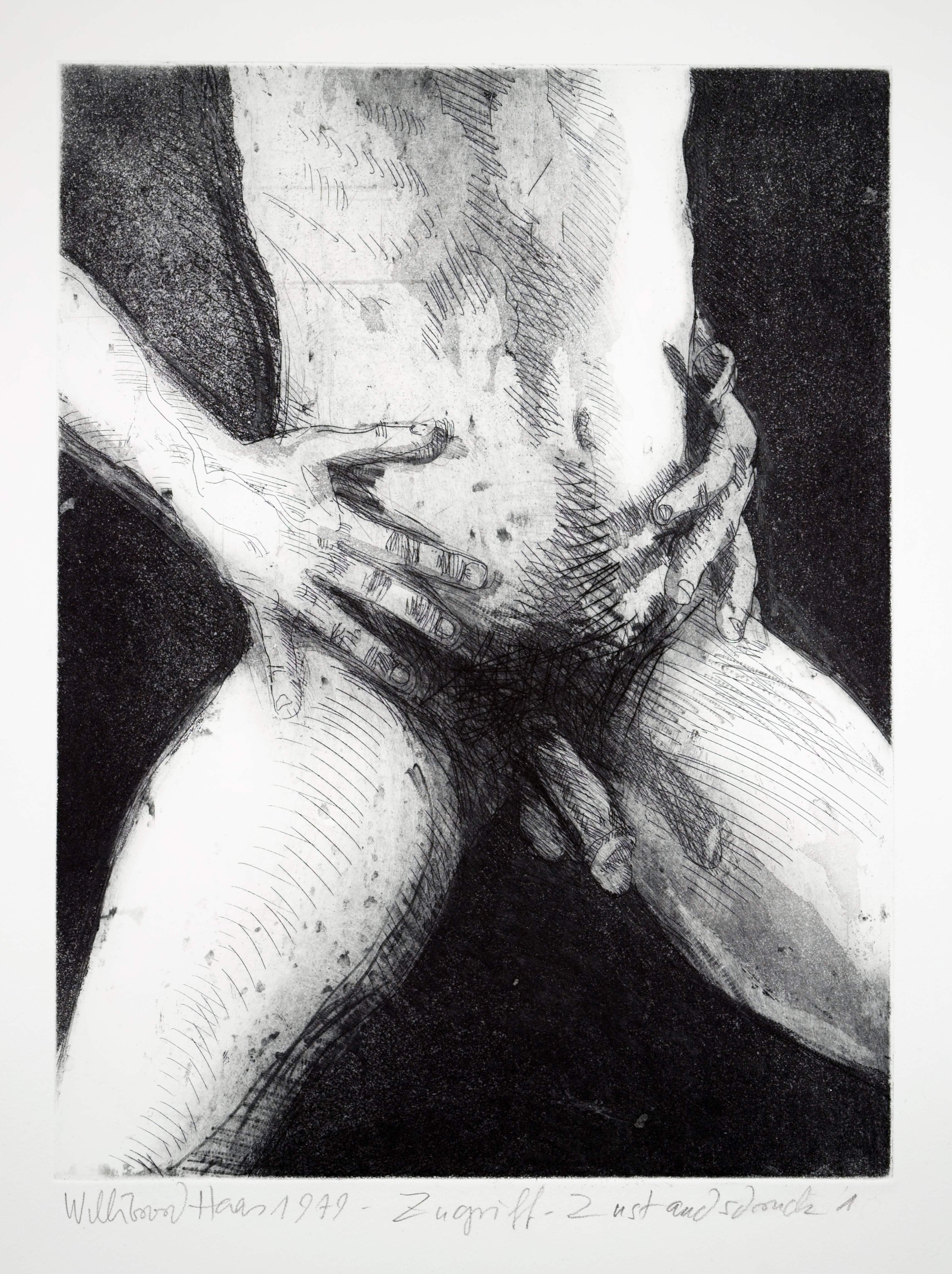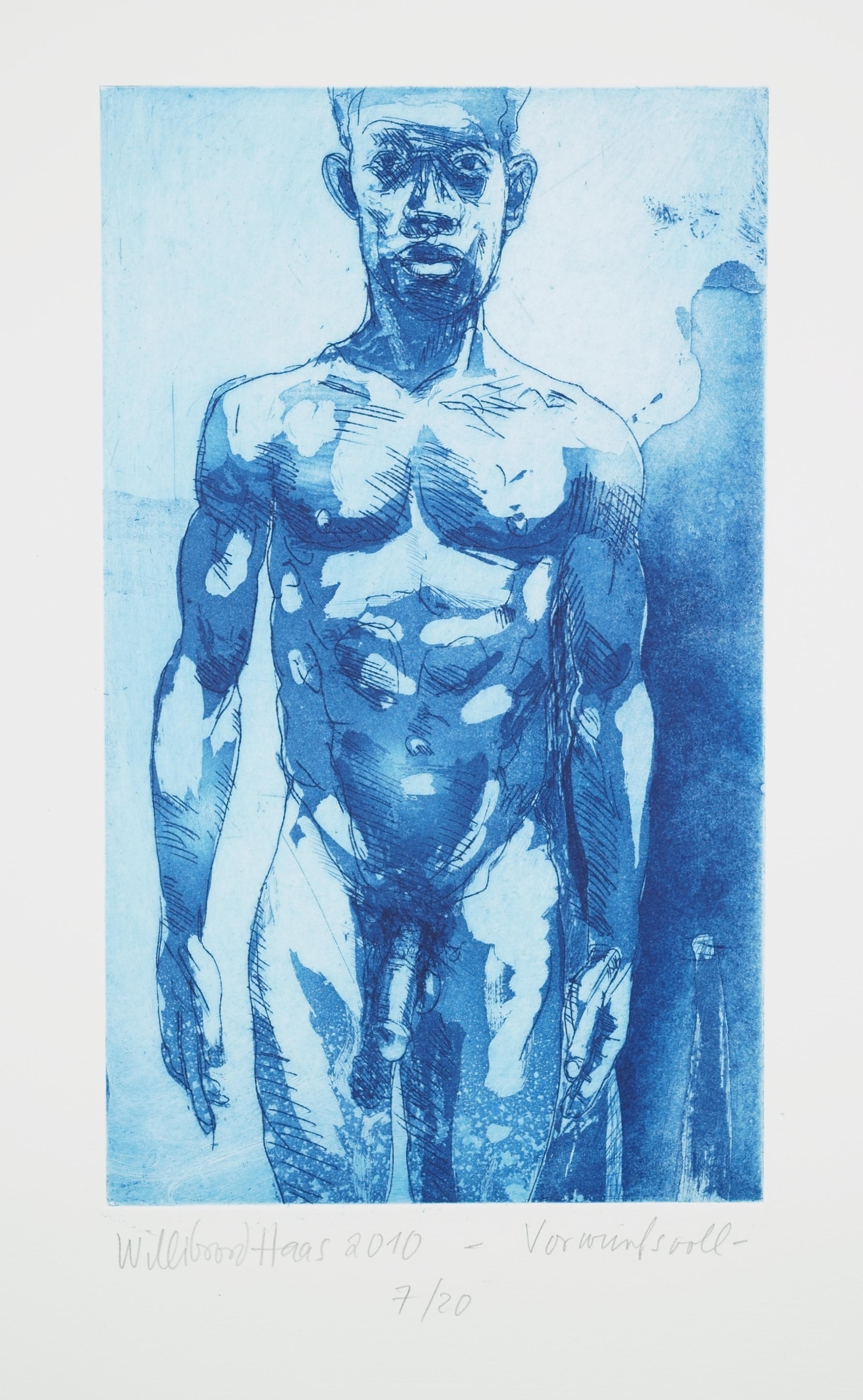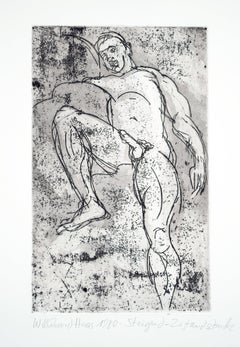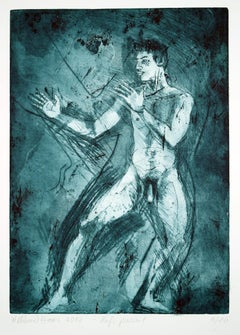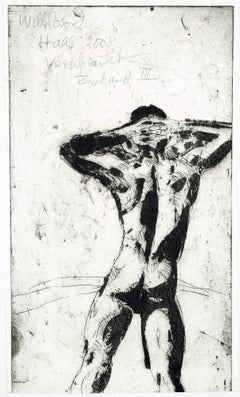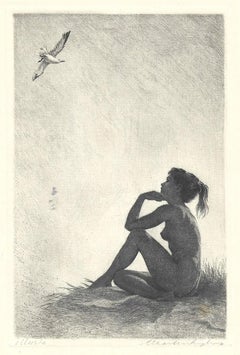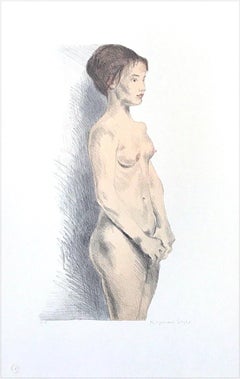Artículos similares a Four Young Women and the Boy Cupid / - Mysterious Virtuosity -
¿Quieres más imágenes o vídeos?
Solicita imágenes o vídeos adicionales al vendedor
1 de 9
Francesco BartolozziFour Young Women and the Boy Cupid / - Mysterious Virtuosity -1764
1764
Acerca del artículo
Francesco Bartolozzi (1728 Florence - 1815 Lisbon), Mythological Scene with Four Young Women and the Boy Cupid, 1764. Crayon engraving on laid paper after a drawing by Guercino, 22 cm x 28.5 cm (plate size), 39.5 cm x 55.5 cm (sheet size), inscribed lower left “Guercino Invent.” as an engraving after Guercino and signed lower right “F. Bartolozzi scolpi” and dated and inscribed “Londra 1764”.
- The wide margin somewhat bumped and with small tears, overall somewhat dusty, otherwise a strong and precise impression in good condition
- Mysterious Virtuosity -
Created in the first year of Bartolozzi's life in London, the sheet illustrates the artist's celebrated virtuosity. This virtuosity led to Bartolozzi's call to London and his appointment as "Engraver to the King." Here, Bartolozzi combines a free-flowing linear design with partial stippling, giving the print an unprecedented graphic-painterly effect. This effect corresponds to the emerging appreciation of drawing as a direct form of artistic expression at that time.
As impressive as the scene is, it remains enigmatic. The four young women are clearly discussing matters of love with the Cupid boy. However, the undefined nature of the scene allows the viewer to complete the picture in their imagination.
About the artist
The son of goldsmith Gaetano Bartolozzi, young Francesco received his first artistic training from his father. He then attended the Academy of Fine Arts in Florence, studied antiquities in Rome, and joined Joseph Wagner's studio in Venice in 1745. Bartolozzi produced numerous engravings based on drawings by Venetian artists for Wagner's art publishing house. These engravings were popular due to their high quality. After engraving drawings by Guercino for George III's librarian, Richard Dalton, Dalton invited Bartolozzi to London in 1764. Bartolozzi lived there for the rest of his life. Bartolozzi was admitted to the Society of Artists, appointed engraver to the king, and elected to the newly founded Royal Academy of Art in 1769. While in London, Bartolozzi acquired the newly discovered crayon technique, which made it possible to translate chalk and charcoal drawings into prints by dotting. This technique became known in England as the "red chalk manner." Bartolozzi further developed this technique by using stippling to create surface effects instead of line-oriented designs, known as "stippled work." He was able to translate painterly and graphic effects into prints with great virtuosity, making Bartolozzi the most popular and sought-after reproduction engraver of his time. Angelika Kauffmann, for example, who also worked in London, had her works engraved by Bartolozzi. In 1802, at the age of 75, Bartolozzi accepted a position as director of the Academy of Fine Arts in Lisbon, where he worked until his death.
GERMAN VERSION
Francesco Bartolozzi (1728 Florenz - 1815 Lissabon), Mythologische Szene mit vier jungen Frauen und dem Amorknaben, 1764. Crayon-Stich auf Bütten nach einer Zeichnung von Guercino, 22 cm x 28,5 cm (Plattengröße), 39,5 cm x 55,5 cm (Blattgröße), unten links mit „Guercino Invent.“ als Stich nach Guercino ausgewiesen und unten rechts mit „F. Bartolozzi scolpi“ signiert und „Londra 1764“ datiert und ortsbezeichnet.
- der breite Rand etwas bestoßen und mit kleinen Einrissen, insgesamt etwas angestaubt, ansonsten kräftig-präziser Druck in gutem Zustand
- Geheimnisvolle Virtuosität -
Das Blatt ist im ersten Jahr von Bartolozzis Lebensabschnitt in London entstanden und veranschaulicht die gefeierte Virtuosität des Künstlers, die zum Ruf nach London und seiner Ernennung zum „Engraver of the King“ geführt hat. Bartolozzi verbindet hier eine frei-flüssige lineare Gestaltung mit einer partiellen Punktierung, so dass die Druckgrafik eine bisher nicht gesehene zeichnerisch-malerische Wirkung erhält, was der damals einsetzenden Schätzung der Zeichnung als unmittelbarem künstlerischen Ausdruck entspricht.
So virtuos die Szene dargestellt ist, so rätselhaft bleibt sie. Die vier jungen Frauen befinden sich offensichtlichen in einem auf den Amorknaben bezogenen Dialog über Liebesdinge. Indem die Szenerie drüber hinaus aber unbestimmt bleibt, wird sie zum Imaginationsraum des Betrachters, der das Bild auf diese Weise vollendet.
zum Künstler
Als Sohn des Goldschmieds Gaetano Bartolozzi erhielt der junge Francesco bei seinem Vater eine erste künstlerische Ausbildung. Anschließend besuchte er die Florentiner Kunstakademie, hielt sich zum Antikenstudium in Rom auf und ging dann nach Venedig, wo er 1745 in das Atelier Joseph Wagners eintrat. Für dessen Kunstverlag fertigte Bartolozzi zahlreiche Stiche nach Zeichnungen venezianischer Künstler an, die sich aufgrund ihrer kongenialen Umsetzung großer Beliebtheit erfreuten. Nachdem er für den Bibliothekar George III., Richard Dalton, Zeichnungen von Guercino gestochen hatte, lud ihn dieser 1764 nach London ein, wo Bartolozzi fortan ansässig war. Er wurde in die Society of Artists aufgenommen, zum Kupferstecher des Königs ernannt und 1769 in die neugegründete Königliche Kunstakademie gewählt. In London eignete er sich die neuerfundene Punktier- oder Crayon-Manier an, die es erlaubt, durch Punktierungen Kreide- und Kohlezeichnungen in die Druckgrafik zu übersetzen, weshalb sie in England auch unter dem Namen ‚Red Chalk Manner‘ bekannt geworden ist. Bartolozzi entwickelte diese Technik weiter, indem er statt einer linienorientierten Gestaltung durch Punktierungen Flächenwirkungen erzeugte, was als ‚Stippled Work‘ bezeichnet wurde. Auf diese Weise vermochte er sowohl malerische wie zeichnerische Wirkungen druckgrafisch umzusetzen, was er mit höchster Virtuosität beherrschte, so dass Bartolozzi zum beliebtesten und gefragtesten Reproduktionsstecher seiner Zeit wurde. So ließ beispielsweise Angelika Kauffmann, die ebenfalls in London tätig war, ihre Werke von Bartolozzi stechen. Im Alter von 75 Jahren folgte er, 1802, dem Ruf nach Lissabon, wo Bartolozzi bis zu seinem Tode als Direktor der Kunstakademie wirkte.
- Creador:Francesco Bartolozzi (1727-1815, Italiano)
- Año de creación:1764
- Dimensiones:Altura: 39 cm (15,36 in)Anchura: 55 cm (21,66 in)Profundidad: 1 cm (0,4 in)
- Medio:
- Movimiento y estilo:
- Época:1760-1769
- Estado:
- Ubicación de la galería:Berlin, DE
- Número de referencia:1stDibs: LU2438216392432
Sobre el vendedor
5,0
Vendedor Oro
Vendedores premium que mantienen una calificación de +4,3 y tiempos de respuesta de 24 horas
Establecido en 2014
Vendedor de 1stDibs desde 2023
17 ventas en 1stDibs
Tiempo de respuesta usual: 6 horas
- EnvíoRecuperando presupuesto…Envío desde: Berlin, Alemania
- Política de devolución
Partes de esta página se han traducido automáticamente. 1stDibs no puede garantizar la exactitud de las traducciones. El inglés es el idioma predeterminado de este sitio web.
Garantía de autenticidad
En el improbable caso de que haya algún problema con la autenticidad de un artículo, ponte en contacto con nosotros en un plazo de 1 año para recibir un reembolso total. DetallesGarantía de devolución de dinero
Si tu artículo no es como se describe, sufre daños durante el transporte o no llega, ponte en contacto con nosotros en un plazo de 7 días para recibir un reembolso total. DetallesCancelación dentro de las 24 horas
Tienes un período de gracia de 24 horas para reconsiderar tu compra, sin preguntas.Vendedores profesionales aprobados
Nuestros vendedores de primera clase deben cumplir estrictos estándares de servicio para mantener la integridad de nuestros anuncios.Garantía de igualación de precios
Si encuentras que un vendedor publicó el mismo artículo por un precio menor en otro lado, igualaremos ese precio.Entrega global de confianza
Nuestra red de transporte de primera ofrece opciones de envío especializado en todo el mundo, que incluye envío personalizado.Más de este vendedor
Ver todoSubiendo
Willibrord Haas (*1936 Schramberg), Alzamiento, 1980. Aguafuerte, 35 cm x 22 cm (tamaño de la plancha), 53,5 cm x 38 cm (tamaño de la hoja). Firmado "Willibrord Haas" a lápiz por el ...
Categoría
Década de 1980, Realista, Impresiones de desnudos
Materiales
Papel
Kufi posa
Willibrord Haas (*1936 Schramberg), Kufi plantea, 2012. Aguafuerte, 44 cm x 32 cm (tamaño de la plancha), 54 cm x 37,5 cm (tamaño de la hoja). Firmado "Willibrord Haas" en plomo por ...
Categoría
2.º década del siglo XXI, Realista, Impresiones de desnudos
Materiales
Papel
La postración completamente desnuda
Willibrord Haas (*1936 Schramberg), La postración completamente desnuda, 1999. Aguafuerte, 32,5 cm x 23,5 cm (tamaño de la plancha), 54 cm x 37,5 cm (tamaño de la hoja). Firmado "Wil...
Categoría
Década de 1990, Realista, Impresiones de desnudos
Materiales
Papel
Enredados
Willibrord Haas (*1936 Schramberg), Enredados, 2008. aguafuerte, 28 cm (alto) x 17 cm (ancho). Firmado "Willibrord Haas" a lápiz por el artista, fechado "2008", titulado "Verschränkt...
Categoría
Principios de los 2000, Realista, Impresiones de desnudos
Materiales
Papel
Accede a
Willibrord Haas (*1936 Schramberg), Acceso, 1979. aguafuerte, 40 cm x 30 cm (tamaño de la plancha), 54 cm x 37,5 cm (tamaño de la hoja). Firmado "Willibrord Haas" a lápiz por el arti...
Categoría
Década de 1970, Realista, Impresiones de desnudos
Materiales
Papel
Reproche
Willibrord Haas (*1936 Schramberg), Reproche, 2010. aguafuerte, 33,5 cm x 20 cm (tamaño de la plancha), 54 cm x 37,5 cm (tamaño de la hoja). Firmado "Willibrord Haas" en plomo por el...
Categoría
2.º década del siglo XXI, Realista, Impresiones de desnudos
Materiales
Papel
335 US$
También te puede gustar
En la sauna Años 60, papel, litografía, 38x49 cm
En la sauna
Años 60, papel, litografía, 38x49 cm
Dzidra Bauma (1930)
Dzidra Bauma trabaja con la técnica de la acuarela. Pinta composiciones figurativas, retratos, paisajes, flore...
Categoría
Década de 1960, Realista, Impresiones de desnudos
Materiales
Papel, Litografía
444 US$ Precio de venta
Descuento del 20 %
Díptico Zancada por días y Díptico Zancada por días al revés
Díptico Zancada por días y Díptico Zancada por días al revés de Amy Gardner [2021]
edicion_limitada
Serigrafía
Edición número 25
Tamaño de la imagen: Alt:59,4 cm x Anch:42 cm
Tamaño...
Categoría
Siglo XXI y contemporáneo, Realista, Impresiones figurativas
Materiales
Papel, Pantalla
Illusie
Alrededor de 1960. Aguafuerte y grabado sobre papel verjurado crema, 141 x 102 mm (5 3/4 x 4 pulgadas), márgenes. Ligeras zonas dispersas de decoloración punteada en los márgenes, to...
Categoría
mediados del siglo XX, Realista, Impresiones de desnudos
Materiales
Papel hecho a mano, Grabado, Grabado químico
STANDING NUDE Litografía firmada, Retrato realista Mujer joven, Dibujo de figura
Por Raphael Soyer
STANDING NUDE una litografía original dibujada a mano por Raphael Soyer, el célebre pintor, dibujante y grabador realista estadounidense de origen ruso. Impreso en papel de archivo A...
Categoría
Década de 1970, Realista, Impresiones de desnudos
Materiales
Litografía
PELO OSCURO DESNUDO DE PIE Firmado Grabado original, Mujer de cuerpo entero, Pose informal
Por Raphael Soyer
PELO OSCURO DESNUDO DE PIE es un grabado original firmado por Raphael Soyer, el célebre pintor, dibujante y grabador realista estadounidense de origen ruso. Impreso en papel de impre...
Categoría
Década de 1970, Realista, Impresiones de desnudos
Materiales
Litografía
480 US$ Precio de venta
Descuento del 28 %
Explorador
Giovanni Domenico Campiglia, "Explorador", grabado, 1734, edición desconocida, escaso. Firmado 'Dom. Campiglia del." en la matriz, abajo a la izquierda. Una impresión fina, sobre pap...
Categoría
Década de 1730, Realista, Impresiones de desnudos
Materiales
Grabado
